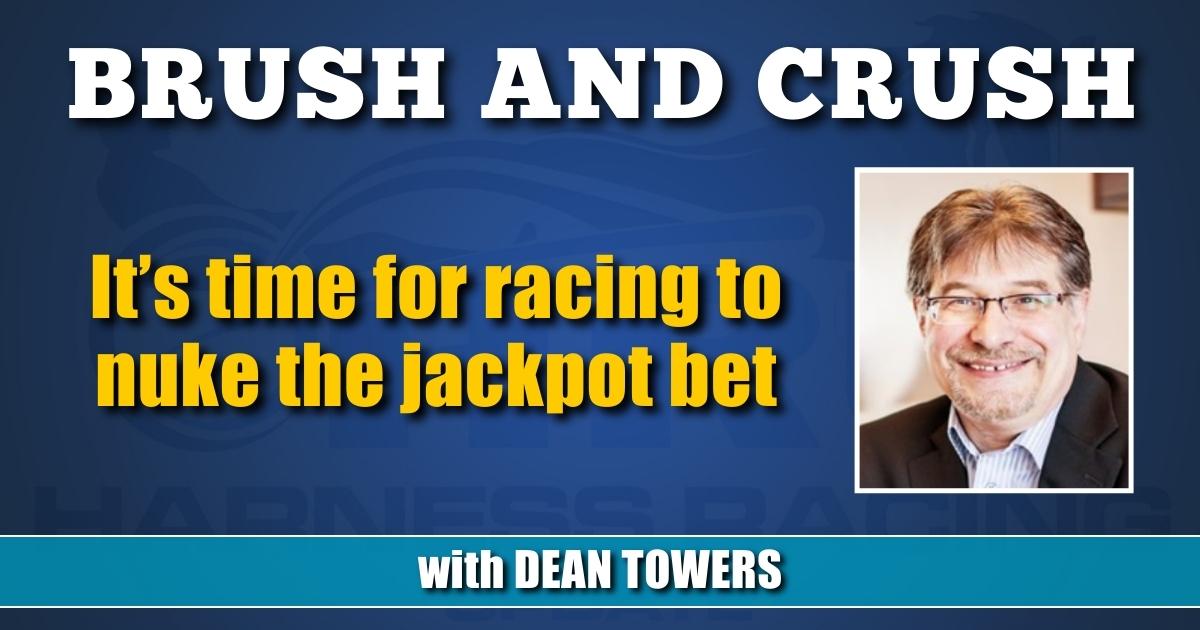It’s time for racing to nuke the jackpot bet
The hard-to-hit bets are eroding the bankrolls of racing’s most important customers: the everyday ones.
by Dean Towers
Everyone has heard of the jackpot wager where one single ticket winner takes home the whole shebang, sometimes to glorious riches. The wagers have been promoted far and wide for years and quite honestly on the surface they make some sense. These bets — some with low 20 cent minimums — should theoretically give the little guy or gal a shot to compete against the big bettors. They fulfill horse racing’s mantra of “bet a little to win a lot” and of course, tracks can promote them daily or weekly, then reap big handles on mandatory payout days. They seem like a good thing.
So, what’s the beef?
The problem is these supposed advantages have been exposed as the exact opposite.
“Jackpot wagers unnecessarily erode retail players’ bankrolls,” said Ed DeRosa of Horse Racing Nation. “The grim reality is that some of racing’s best customers — those who wager between $1,000 and $10,000 a month with minimal or no rebate schedule — lose more than 40 per cent of their handle on jackpot wagers. This is money directly out of racing’s ecosystem, and it’s not being replaced.”
What DeRosa partially references, is that the wager’s takeout rates on non-mandatory days are usurious and these are the exact instances smaller or everyday players are enticed to patronize them. Arguably our most important and faithful cohort — those who have been with this sport for years — are the ones having their bankrolls degraded most.
This is echoed by a high-end professional player (whose name I withhold by request), who the jackpot bet actually does benefit. And in this case, he refers to the mandatory payout days, which are supposed to be an edge for all customers for the low or no takeout they provide.
“This bet [on mandatory days] basically caters to the computer groups but is cleverly hidden behind the veil of life-changing scores to bring the casual horseplayers out to slaughter,” he said. “There are no life-changing scores with groups getting a lot down, fading square action and covering it to 20 cent precision.”
This lambs-to-slaughter metaphor isn’t just an opinion from a sharp, well capitalized player.
Pat Cummings of the Thoroughbred Idea Foundation recently acquired and examined data from mandatory payout days through Florida public records. He found retail players were 32.5 per cent underwater on these mandatories. That’s about 50 per cent more than overall blended takeout; much worse when we factor in the overall lower takeout benefit the carryover provides.
Reviewing other public records, I was completely floored by some of the numbers.
In the not so recent past at the Fresno Fair in California, a jackpot carryover Super High Five pool from the previous year was paid out, but apparently the casual player didn’t get the memo that their money was finally being distributed. About $710,000 of the $764,000 (93 per cent) wagered on the Super High Fives (with the carryover free money) was from the betting teams, with nary a casual player to be found.
Back in 2010 when jackpot bets began, professional horseplayer @insidethepylons penned a post on a popular racing chat board asking how the sport is supposed to grow when a regular player who goes to the track with $200 and churns it five or six times, suddenly begins to wager into a bet with almost no return and zero churn, leaving the track broke each day.
More than a dozen years on, I think the answer to his question is pretty clear.
Fortunately, unlike most problems in this sport, this one has a very easy fix: Nuke the jackpot bet and make sure it never returns.
















